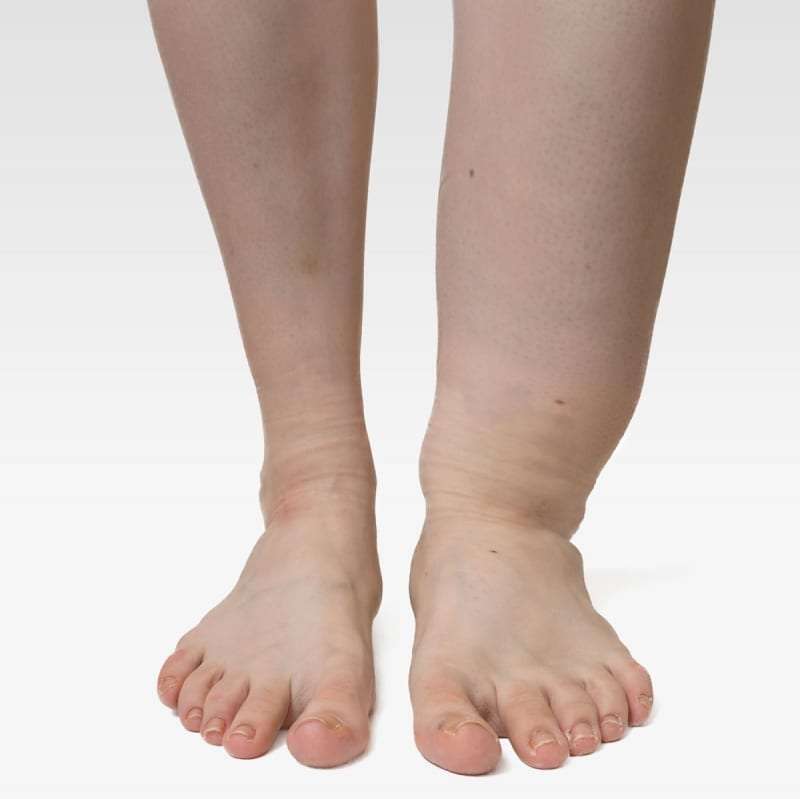What are the symptoms of post-thrombotic syndrome?
Post-thrombotic syndrome (PTS) is a condition that can occur after a deep vein thrombosis (DVT), where long-term complications and symptoms develop as a result of the initial blood clot. The symptoms of PTS can vary in severity and impact on daily life. Common symptoms include:
1. Chronic Leg Pain
- Discomfort: Persistent pain or aching in the affected leg, which may worsen with prolonged standing or walking.
2. Swelling
- Edema: Chronic swelling in the leg, which may be more pronounced at the end of the day or after prolonged activity.
3. Skin Changes
- Skin Discoloration: Changes in skin color, such as redness or a bluish tint, in the affected area.
- Pigmentation Changes: Darkening of the skin (hyperpigmentation) due to chronic venous insufficiency.
- Ulcers: Development of venous ulcers or sores on the skin, particularly around the ankles.
4. Heaviness or Discomfort
- Leg Heaviness: A feeling of heaviness or fullness in the leg, which can be uncomfortable.
5. Itching or Burning Sensation
- Skin Sensations: Itching or a burning sensation in the affected leg due to changes in the skin and underlying tissues.
6. Varicose Veins
- Enlarged Veins: Development or worsening of varicose veins, which are swollen, twisted veins visible under the skin.
7. Reduced Mobility
- Difficulty Moving: Reduced range of motion or difficulty moving the affected leg, especially if pain or swelling is significant.
8. Cramping
- Muscle Cramps: Occasional muscle cramps or spasms in the affected leg.
9. Discoloration and Thickening
- Skin Thickening: Thickening of the skin in the affected area, often accompanied by a leathery texture.
10. Symptoms Worsening with Activity
- Increased Symptoms: Symptoms may worsen with physical activity or standing for extended periods, and improve with rest or elevation of the leg.
Post-thrombotic syndrome can significantly impact daily activities and quality of life. If you experience symptoms consistent with PTS following a DVT, it’s important to consult a healthcare provider for a comprehensive evaluation and appropriate management.
What are the causes of post-thrombotic syndrome?
Post-thrombotic syndrome (PTS) occurs as a complication of deep vein thrombosis (DVT), where blood clots form in the deep veins, typically in the legs. The main causes of PTS are related to damage caused by the DVT to the veins and their valves, leading to impaired blood flow and increased pressure. Specific causes include:
- Venous valve damage: DVT can damage or destroy the one-way valves in veins that prevent blood from flowing backward. This leads to blood pooling and increased pressure in the veins.
- Chronic venous obstruction: The clot can block the vein partially or completely, leading to poor blood circulation and increased venous pressure.
- Venous hypertension: Increased pressure in the veins due to the clot and damaged valves can lead to swelling, inflammation, and chronic changes in the leg tissues.
- Recurrent DVT: Repeated episodes of DVT can cause more extensive damage to the veins, increasing the risk of PTS.
- Incomplete clot resolution: In some cases, the clot may not fully dissolve, leaving scar tissue that interferes with normal blood flow.
Risk factors that increase the likelihood of developing PTS include:
- Large or proximal DVT (closer to the torso, such as in the thigh)
- Delay in starting or inadequate treatment of DVT
- Obesity
- Older age
- Female gender
- Pre-existing chronic venous insufficiency
Timely treatment and prevention of DVT can reduce the risk of post-thrombotic syndrome.
What is the treatment for post-thrombotic syndrome?
The treatment for post-thrombotic syndrome (PTS) focuses on managing symptoms, improving blood flow, and preventing further complications. Key treatment strategies include:
- Compression therapy:
- Compression stockings: Worn on the affected leg to reduce swelling, improve blood flow, and relieve pain. They are typically prescribed at a pressure level of 30-40 mmHg.
- Intermittent pneumatic compression (IPC): A device that inflates and deflates sleeves worn on the legs to improve circulation and reduce venous pressure.
- Exercise and physical therapy:
- Leg elevation: Regularly elevating the legs above heart level helps reduce swelling and improve blood flow.
- Physical activity: Regular walking or exercises that engage the leg muscles can help improve circulation and prevent symptoms from worsening.
- Supervised physical therapy: May be recommended to help strengthen leg muscles and reduce symptoms.
- Medications:
- Anticoagulants: Blood thinners, such as warfarin or direct oral anticoagulants (DOACs), may be used to prevent further clot formation.
- Pain relief: Non-steroidal anti-inflammatory drugs (NSAIDs) or other pain relievers may be prescribed for discomfort.
- Diuretics: May be used to manage significant leg swelling, although they are not a primary treatment.
- Endovascular procedures:
- Catheter-directed thrombolysis: A minimally invasive procedure to dissolve blood clots in the veins, which may help reduce the risk of PTS if performed early after DVT.
- Venous stenting: In cases of severe vein narrowing or blockage, a stent may be placed to improve blood flow.
- Surgical options:
- Vein bypass surgery: Rarely performed but may be considered in severe cases where other treatments have not been effective. It involves rerouting blood flow around damaged veins.
- Venous valve repair: May be attempted in cases where venous valves are significantly damaged.
- Lifestyle modifications:
- Weight management: Maintaining a healthy weight can reduce pressure on the veins and improve blood flow.
- Avoiding prolonged sitting or standing: Regular movement and leg elevation can help manage symptoms.
- Long-term monitoring: Regular follow-up with a healthcare provider is important to manage PTS and prevent further complications, such as additional deep vein thrombosis (DVT) episodes.
While PTS is a chronic condition, early treatment and preventive measures after a DVT episode can significantly reduce symptoms and improve quality of life.

Leave a Reply
You must be logged in to post a comment.